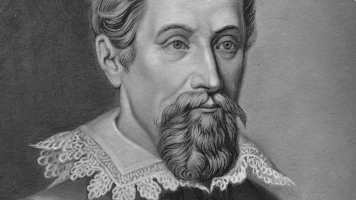Top 10 Interesting Facts About Johannes Gutenberg
The moveable type printing technology was invented in Europe by Johannes Gutenberg, a German inventor. In the printing industry, his invention is regarded as ... read more...groundbreaking. He was a jeweler, blacksmith, printer, and publisher in addition to being an inventor. His printing technology used oil-based ink to print books and other materials at first. Later researchers refined the method, leading to the creation of complex tools and machines. Explore ten interesting facts about Johannes Gutenberg to gain more knowledge about this inventor.
-
One of the most interesting facts about Johannes Gutenberg is his surname comes from his paternal ancestral house. Johannes Gensfleisch zur Laden zum Gutenberg was the youngest son of Friele Gensfleisch zur Laden and his second wife Else Wyrich, and was born in the German city of Mainz. They lived in a house that had been passed down through patrician families since the 13th century. The patricians were affluent, powerful, and members of Mainz's political elite.
Gutenberg was born in the year 1400, according to official records. His date of birth, according to historians, was between 1394 and 1404. It was common practice in 15th century Germany to use the name of one's home as one's surname. Johannes' family resided in Hof zum Gutenberg, his paternal ancestral home. Unlike his father, who got his surname Gensfleisch zur Laden from other family possessions, Johannes got it from Hof zum Gutenberg.
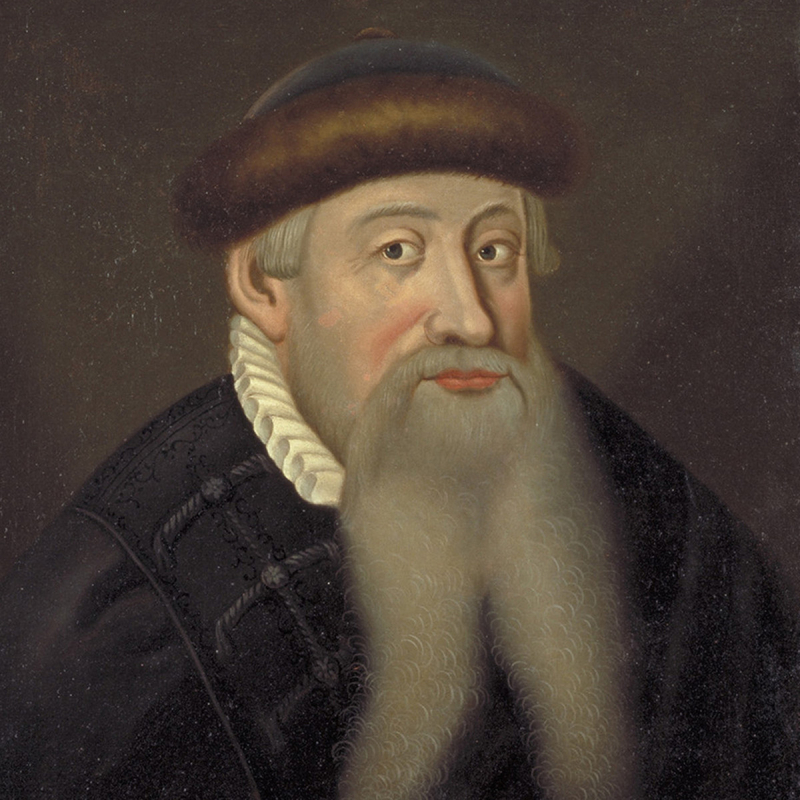
Photo: https://www.biography.com/ 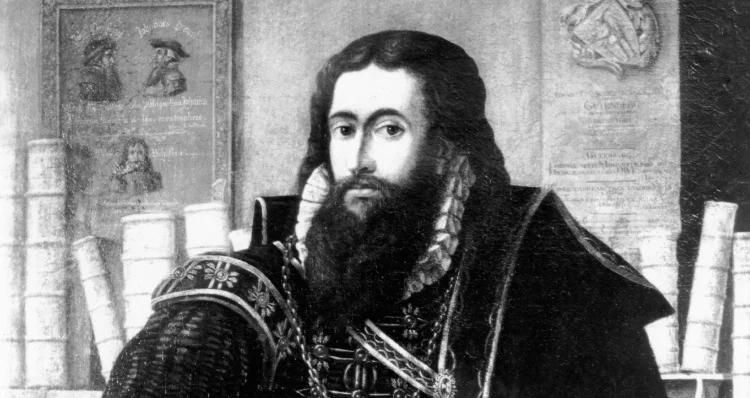
Photo: https://www.historyhit.com/ -
Friele Gensfleisch, Gutenberg's father, was a goldsmith who had also served on the municipal council, and his mother, Else Wyrich, was the daughter of a respectable Mainz shopkeeper. Johannes undoubtedly grew up learning how coins were created from Friele Gensfleish, who also had a managerial role in the Mainz Mint. Friele and Else were Johannes' brothers and sisters, respectively. Patze was his father's half-sister from his father's first marriage.
Little is known about Gutenberg's early life, as well as his family's. His father was an employee of the ecclesiastical mint. Johannes was familiar with goldsmithing as a child because his father was a goldsmith. This ability was frequently passed down through the generations. As a result, the Gutenbergs were fantastic goldsmiths. They'd gained a lot of information and technical skills in the field of metalworking. They sold metal to the mint with his father's help. Among other things, the metal would be transformed into special coins.
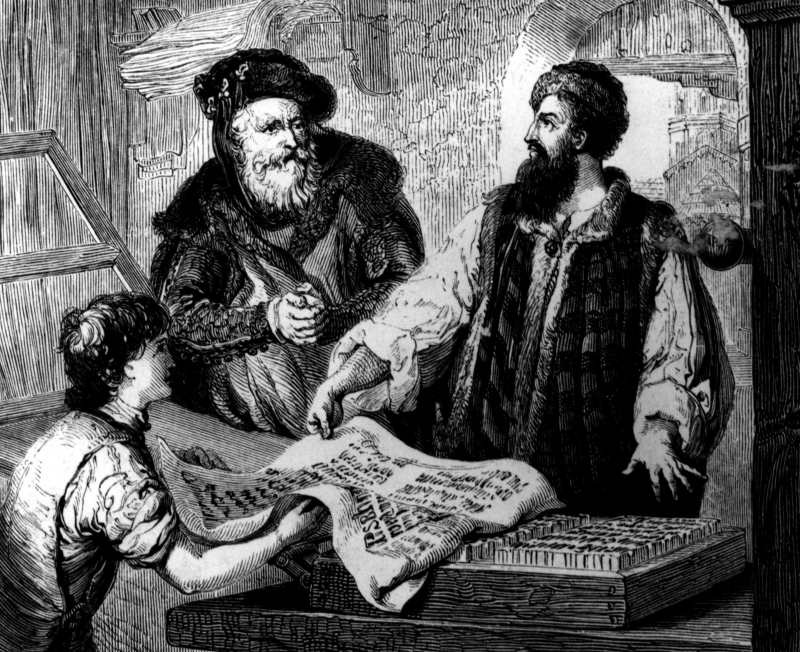
Photo: https://www.thoughtco.com/ 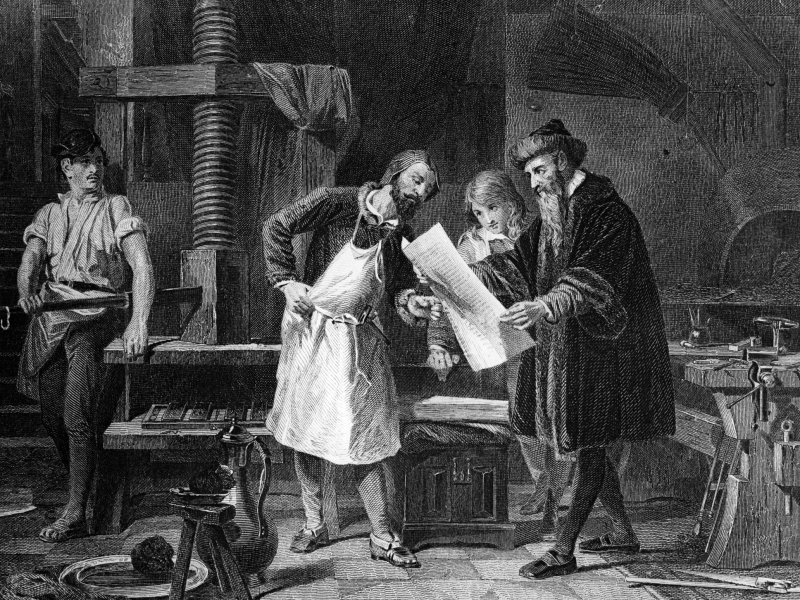
Photo: https://www.thebalancecareers.com/ -
Patrician is a term used to describe members of Europe's aristocratic households during the time. They paid minimal or no taxes in Mainz and were given annual payments derived from the taxation of non-patriotic residents. There were severe clashes in Mainz during Johannes Gutenberg's time between the patriciate, the city upper class, and the guilds, as the unions of craftsmen were known. The guilds had been given additional rights over the ancient patrician families, and therefore more voice in the city government, according to a new council constitution. Soon after, a disagreement arose between the two parties regarding the election of a new mayor. Friele Gensfleisch, along with over a hundred other patricians, fled Mainz on short notice in 1411. Gutenberg's family left the city again two years later, in 1413, owing to hunger riots.
As the son of an aristocratic family, Johannes Gutenberg had no choice but to receive such an education, and his command of Latin shows that he did. Perhaps he traveled to the monastery of St. Viktor before coming to Mainz for this reason. In any case, Gutenberg later became a member of St. Viktor's lay brotherhood.
Gutenberg most likely stayed with relatives in Eltville when he was away from Mainz. The electoral castle in Eltville on the Rhine was finished in 1347. Afterward, until 1480, the town was the residence of the archbishops of Mainz. Gutenberg had strong ties to Eltville, a town near Mainz, thanks to his family's contacts there (his family owned a house there).
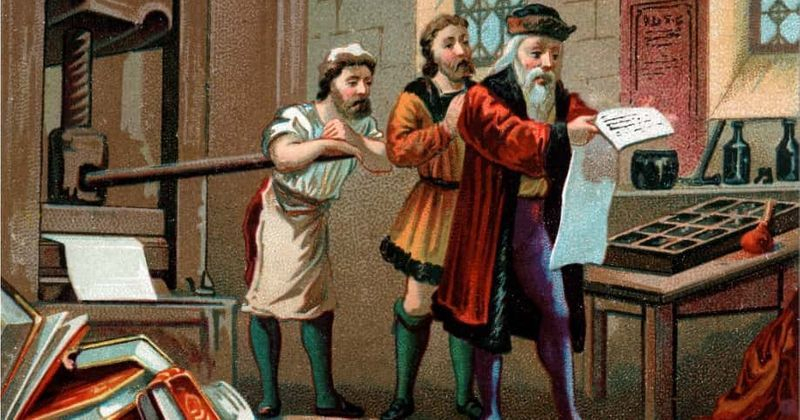
Photo: https://worldrepublicnews.com/ 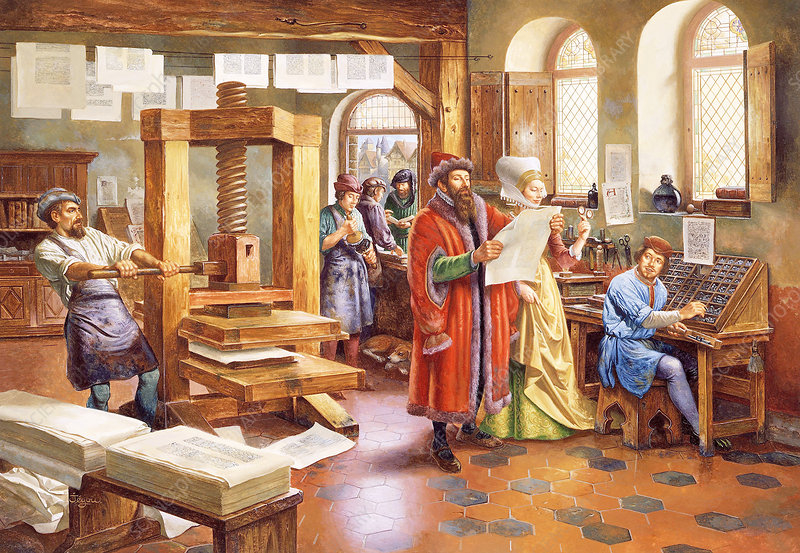
Photo: https://www.sciencephoto.com/ -
Gutenberg most probably did not get married is known as one of the most interesting facts about Johannes Gutenberg. Friele, Gutenberg's father, died in 1419. Johannes' family had already returned to Mainz, and he stayed in his hometown for some time after that. After his father's death, Gutenberg spent the next 15 years of his life alone.
By 1434, Gutenberg was undoubtedly residing in Strasbourg, a city noted for its metalwork. He had learned how to work with metal from his father, a skill he had inherited. Gutenberg was able to find work in the new city, which was recognized for its metal trades. An aristocratic woman named Ellewibel zur Isernin Thure filed a complaint against Gutenberg in Strasbourg, accusing him of breaching a vow to marry her daughter, Ennelin. The case's outcome is unknown, although it is evident that Gutenberg did not marry her. Gutenberg never married or had any children, according to the facts.
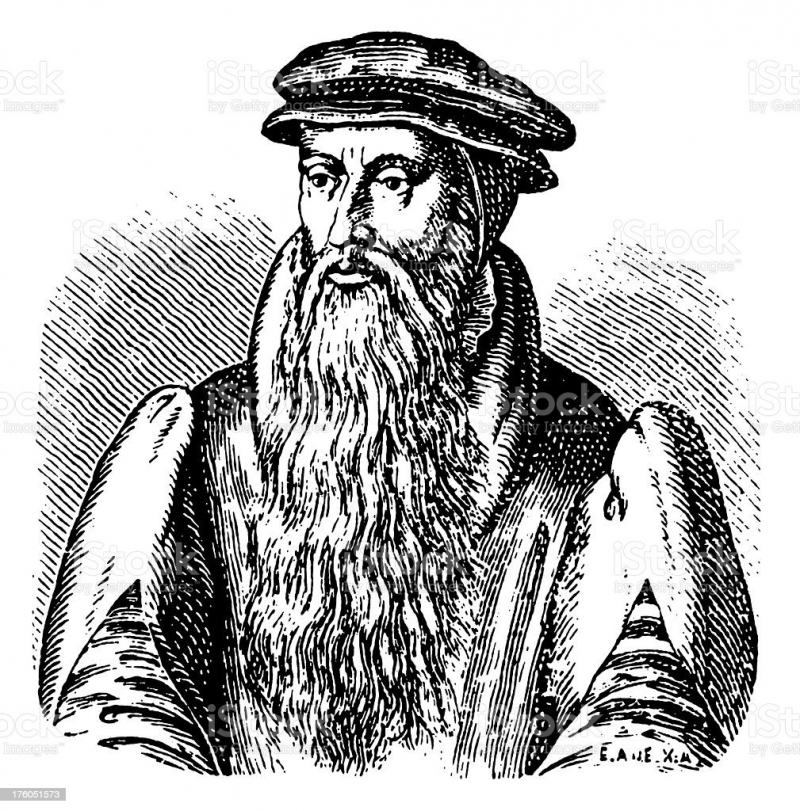
Photo: https://www.istockphoto.com/ 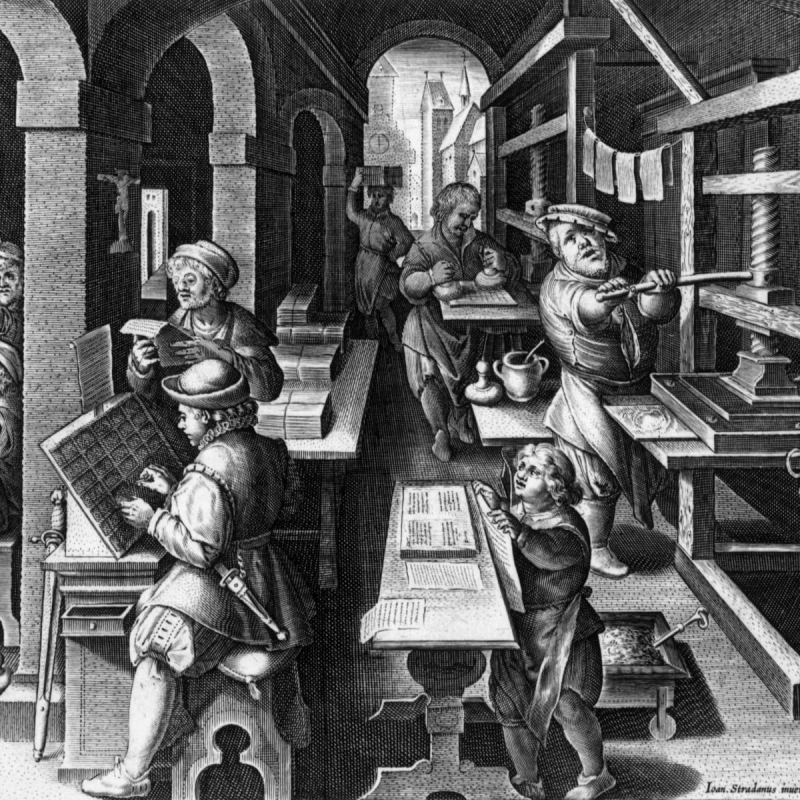
Photo: https://www.history.com/ -
During the 15th century, a shrine called Aachen was located 160 kilometers northwest of Strasbourg city. In the year 1439, an event was planned for this revered site. The pilgrims believed that if they could catch the reflection of Aachen in a mirror, they would be able to capture the healing qualities, therefore the event was expected to draw a big crowd.
An interesting fact about Johannes Gutenberg is that he forged agreements with investors to benefit from the production of convex mirrors for pilgrims. Due to flooding and the emergence of sickness, the event had to be postponed. This situation caused him trouble because investors demanded their money. He expressed his idea for inventing the mechanical movable type printing technique on this occasion.
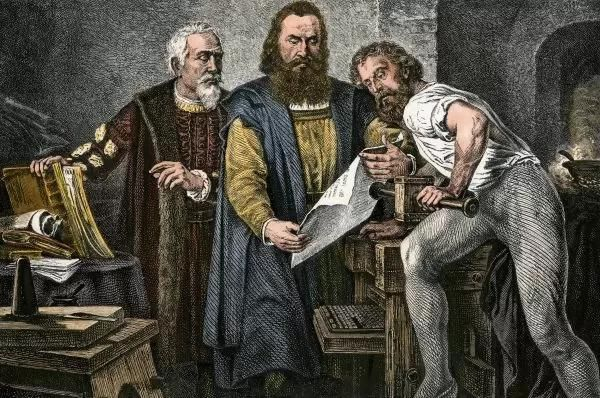
Photo: https://www.northwindprints.com/ 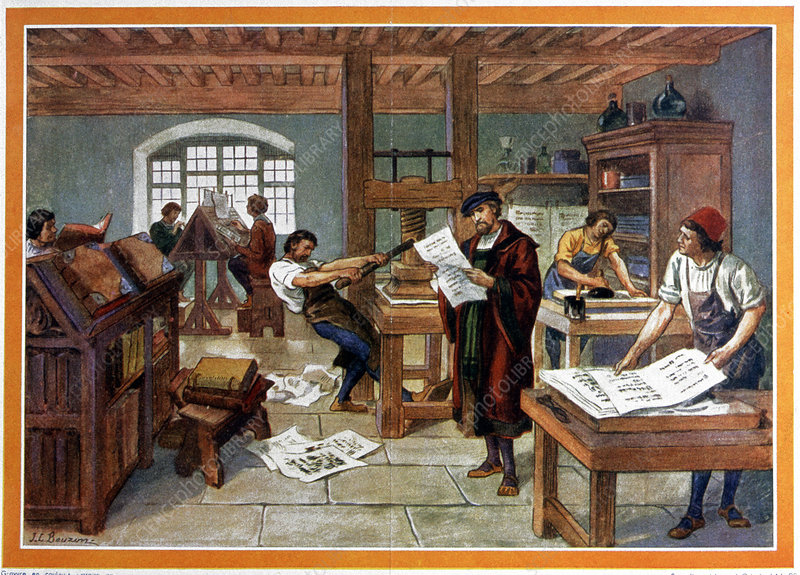
Photo: https://www.sciencephoto.com/ -
Johannes Gutenberg used his invention to print roughly 180 copies of the Bible, today known as the Gutenberg Bible, in the early 1450s. The volumes were soon sold due to their exceptional condition, with some fetching as much as 30 Florins – around three years' earnings for a clerk at the time. The Gutenberg Bible was Europe's first mass-produced book, and it has since become a cultural symbol. Only 49 of the original 180 printed copies of the book remain, with less than half being complete. Libraries, museums, and universities are the most common places to find them. The last time a full Gutenberg Bible was sold was in 1978, for $2.2 million. A complete copy, according to experts, would now cost around $35 million at auction.
Gutenberg's invention revolutionized the world by allowing for the first time the mass production of books. Before Gutenberg, every book had to be copied by hand (except for Asia, where some printed books had been made much earlier). It was now able to accelerate the procedure without compromising quality. His invention did not make him wealthy, but it did lay the groundwork for the commercial mass printing of books, which meant that books became more affordable and accessible to a wider range of people.
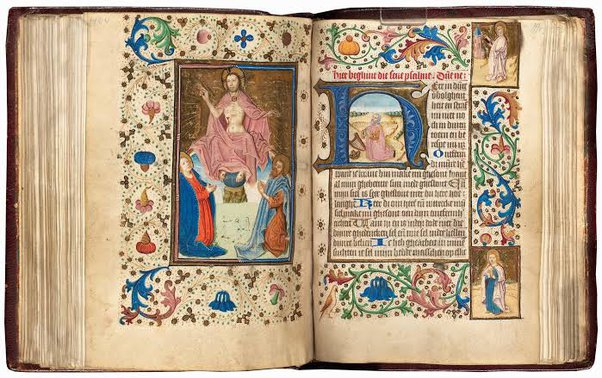
Photo: https://www.quora.com/ 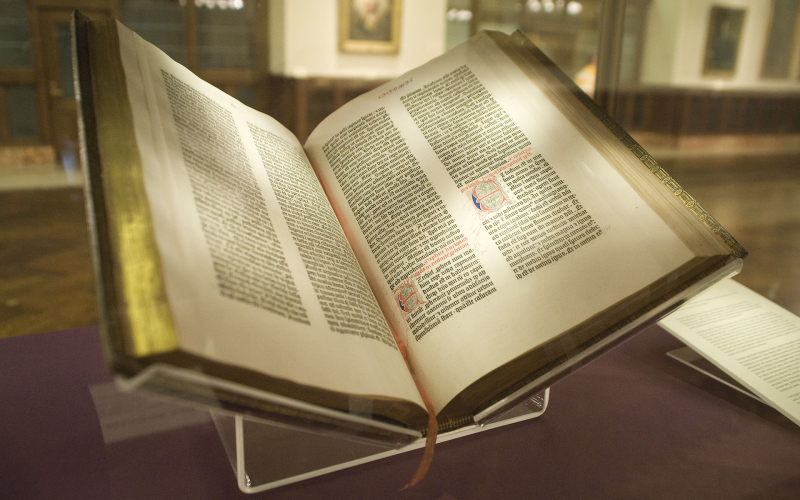
Photo: https://en.wikipedia.org/ -
Gutenberg had borrowed money from Johann Fust, a wealthy moneylender, to complete his Bible project. Later, Peter Schoffer, Fust's future son-in-law, joined the company. Gutenberg and Fust had a disagreement in 1456, in which Fust accused Gutenberg of squandering his cash and sought his money back. Gutenberg owed over 20,000 guilders. Fust filed a lawsuit in the archbishop's court, and the court ruled in his favor, giving him ownership of the Bible printing workshop as well as half of all printed Bibles. The ruling nearly bankrupted Gutenberg, but Fust and Schoffer used his innovation to print the Mainz Psalter, a holy book commissioned by the archbishop of Mainz in 1457. The Mainz Psalter was the first book to acknowledge its printers, Fust and Schoffer, but it made no mention of Johannes Gutenberg, the inventor of the printing method.
Many accounts describe Johannes Gutenberg as a risk-taker. He needed additional money to continue his work after investing all of his wealth in printing equipment. He would not have been able to achieve his mission of printing Bibles if it hadn't been for the assistance of a buddy. According to many sources, he frequently worked on projects that were of little or no value. Others claim he squandered resources by casting metal letters in molds that had to be reused for each print. He failed numerous times before finally succeeding later in life.
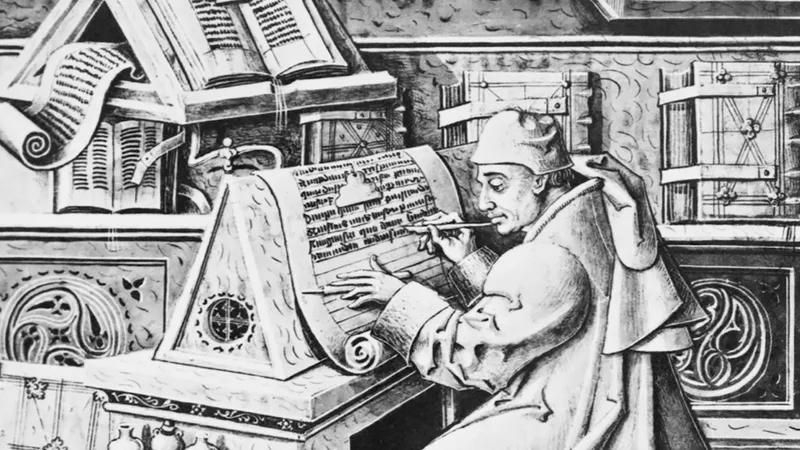
Photo: https://www.britannica.com/ 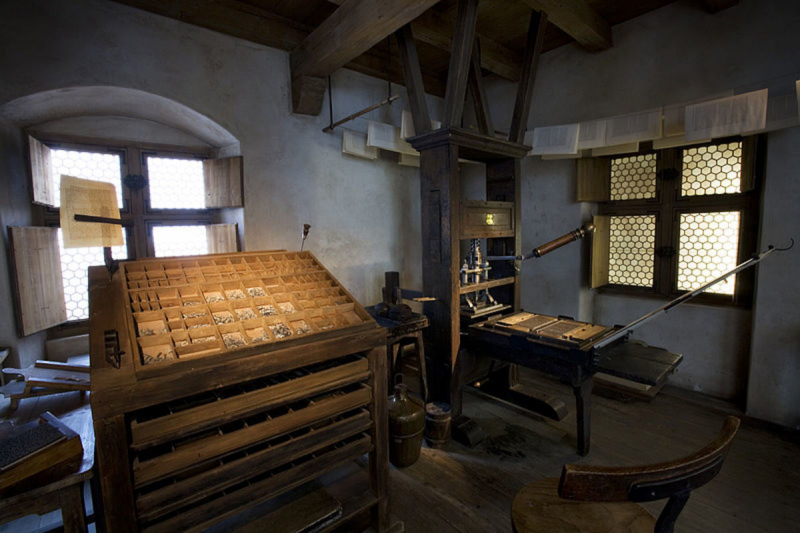
Photo: https://owlcation.com/ -
The printing machine of Johannes Gutenberg, Europe's first commercial printer, is without a doubt his most important invention. However, it took him 20 years of hard effort and labor to complete his printing press. It isn't a phenomenon that will happen overnight.
Since his early years as a goldsmith, Gutenberg had been experimenting with various printing techniques and had made some success by 1450. A wine press he designed for his father-in-law, which used the notion of pressure to extract more juice from grapes, was believed to have influenced him.
Gutenberg's desire to establish a machine that could generate numerous similar pieces quickly prompted him to develop a movable kind of printing capable of producing texts quickly. As a result, the first type of printing machine would be faster than block printing because one person could work on multiple projects at once.
Even though Johannes Gutenberg was not the first to invent moveable types, he perfected the technology of mass-producing them and pushed the use of oil-based ink in printing.
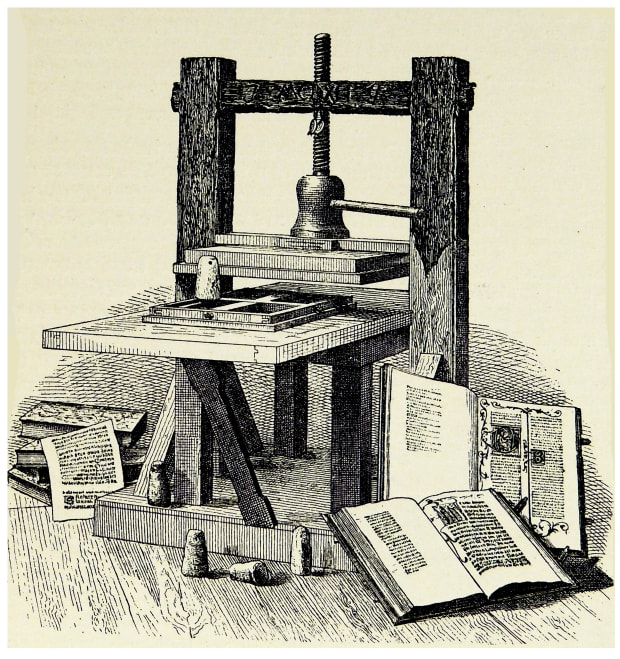
Photo: https://www.history.com/ 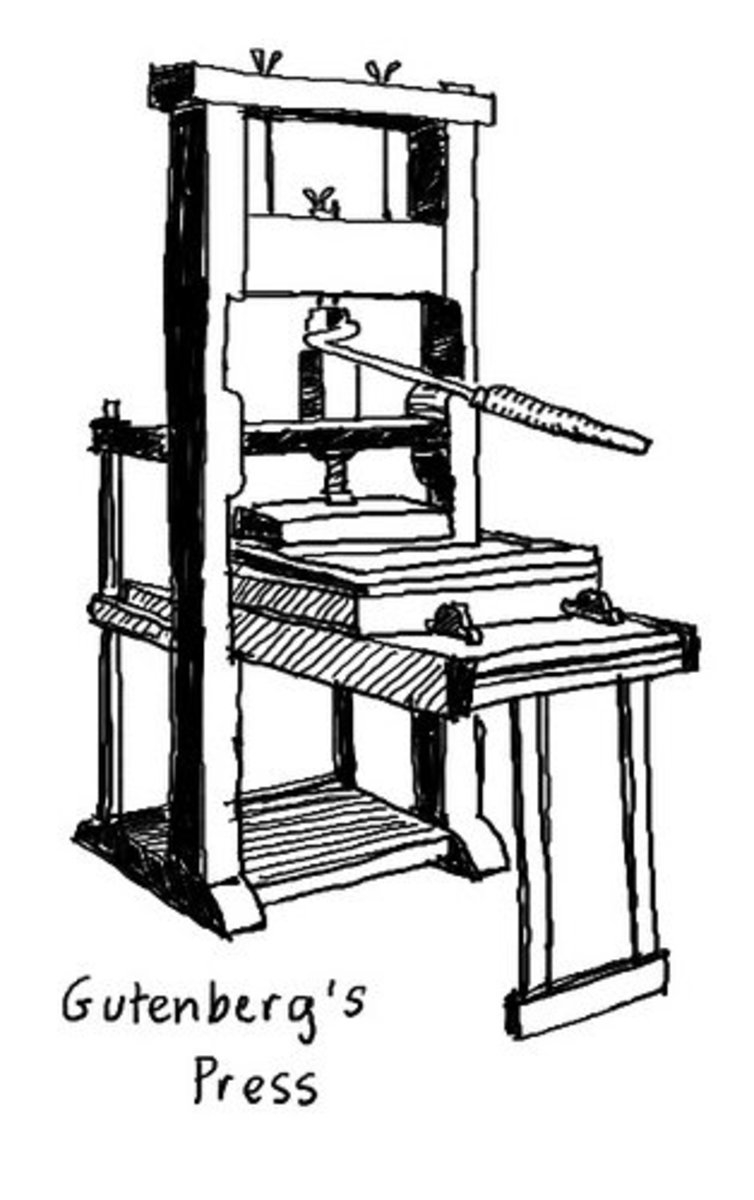
Photo: https://owlcation.com/ -
Without a question, Johannes Gutenberg's printing press is one of the most significant inventions in human history, changing the way we do things forever. Many people in Europe took notice of Gutenberg's revolutionary printing machine, and many of them went into the printing business, contributing to Europe's Printing Revolution. As a result, Europe saw remarkable advances in book publishing and knowledge dissemination.
Printers could make books and other printed items faster and more correctly using Gutenberg's printing machine than they could with hand-copying. In the year 1450, Gutenberg invented the printing press by combining existing technologies and his innovations. Movable type was one of his fundamental concepts. Rather than using wooden blocks to press ink onto paper, Gutenberg created pages fast using movable metal bits.
The printing machine accelerated the commercialization of printing and fueled the growth of new printing firms in Europe, which later spread to other continents. The printing business was also altered by Gutenberg's invention, which allowed printers to make books faster and cheaper than ever before, resulting in more written information being available.
More people have access to knowledge as a result of more reading resources, and the literary level has risen as a result. New industries arose as a result of Johannes Gutenberg and the printing press, including present copyright laws and scientific research and publishing.
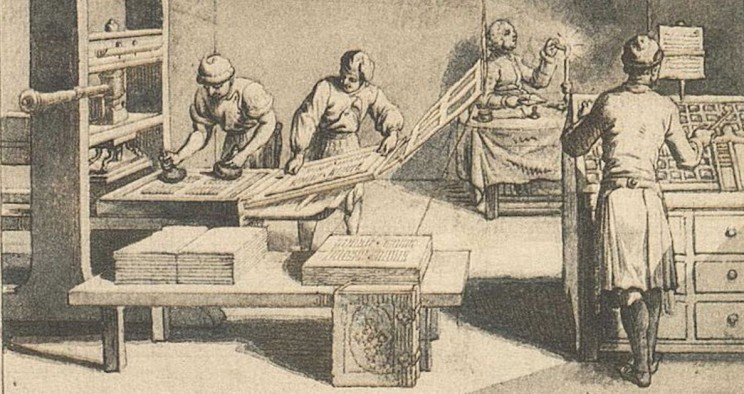
Photo: https://interestingengineering.com/ 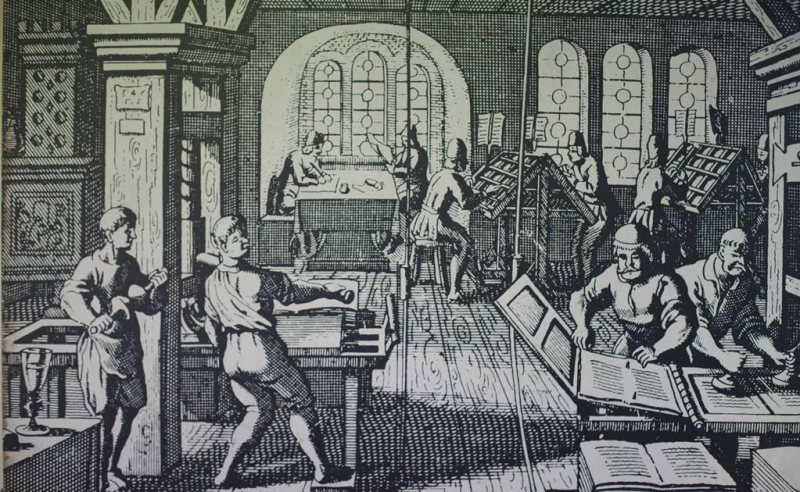
Photo: http://www.freespeechhistory.com/ -
There were only roughly 30,000 books in all of Europe before Johannes Gutenberg. His printing invention swiftly spread throughout Europe, and by 1500 printing presses, over 20 million volumes had been printed. In the 16th century, the output was believed to be between 150 and 200 million copies. For the first time, Gutenberg's invention made books available to ordinary people, boosted literacy, and ended the monopoly of the wealthy over education. It was crucial to the Renaissance, Reformation, Age of Enlightenment, and Scientific Revolution's development. The printing revolution, which began with Gutenberg's work, changed the organization of society, posed a challenge to religious institutions, and is seen as a pivotal event in the development of the modern age. Gutenberg's invention was named the most important of the second millennium by Time-Life magazine in 1997, while Johannes Gutenberg was named the most influential person of the second millennium by A&E Network in 1999.
The replacement of hand-operated Gutenberg-style presses with steam-powered rotary presses permitted printing on an industrial scale in the 19th century, while Western-style printing was adopted all over the world, eventually being the only option to print in large quantities. This was a significant advancement, allowing the middle class to purchase books for the first time in European history. Knowledge and education expanded like never before over the continent. The printing press spread quickly throughout Europe, and thousands of books were printed on printing presses in no time.
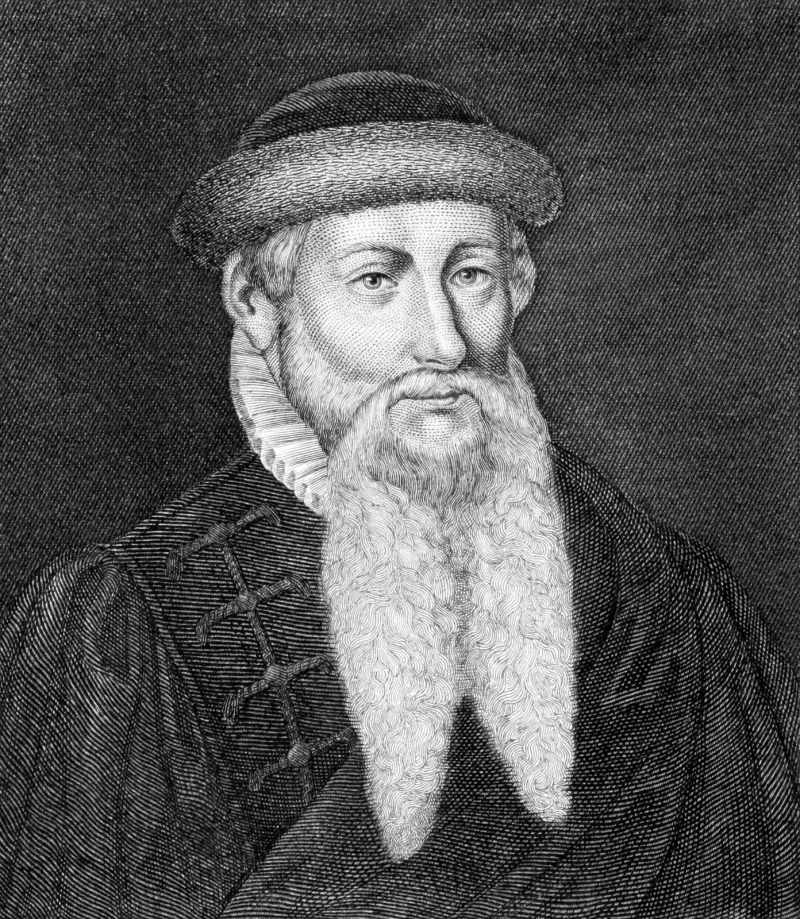
Photo: https://www.britannica.com/ 
Photo: https://www.livescience.com/












